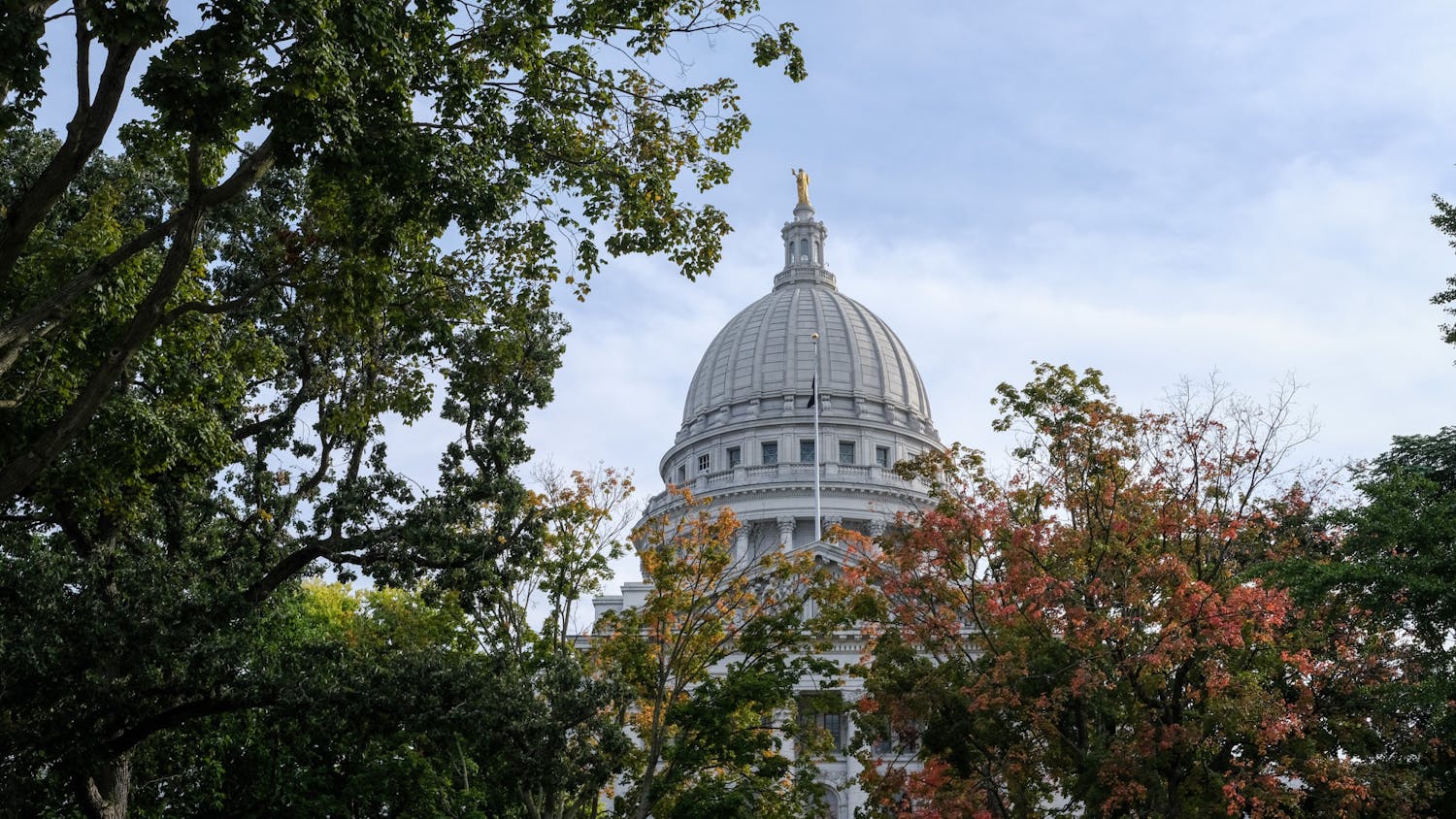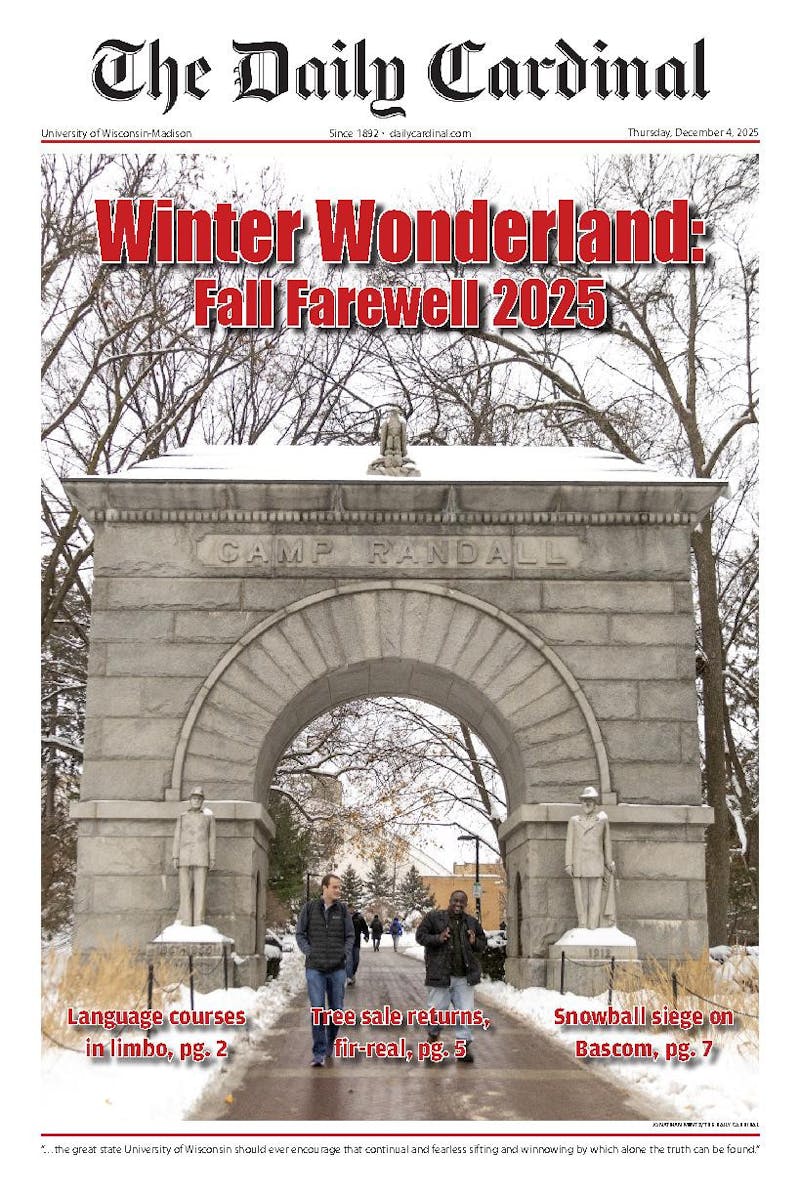A new report released by the Clean Lakes Alliance found higher phosphorus levels and lower water clarity than last year in four of five Madison area lakes as a result of pollution from runoff and dumping.
The 2024 State of the Lakes report was released at the Clean Lakes Alliance annual Community Coffee event on May 13, 2025, bringing together Wisconsin officials, community members and environmental advocates. The report analyzed projects, practices, water quality and beach closures across the state in 2024.
The Clean Lakes Alliance rated the phosphorus level and offshore clarity of each lake in the Yahara Watershed, the chain of lakes around Madison, on a scale ranging from ‘poor’ to ‘excellent’ based on an analysis by Clean Lakes Chief Science Officer Paul Dearlove.
Lake Mendota, Lake Monona, Lake Waubesa and Lake Kegonsa received a ‘fair’ rating for both metrics, while Lake Wingra received a ‘good’ rating. With the exception of Lake Wingra, each lake’s ratings regressed from the previous 2023 State of the Lakes report.
The report also included more detailed metrics and information on weather and climate drivers, phosphorus data, clarity and conservation practices. It used data collected by the University of Wisconsin-Madison Center for Limnology, the Dane County public health, land and water agencies and the Wisconsin Department of Natural Resources, among other sources, as well as their own citizen science network called the LakeForecast monitoring network.
Major problems the lakes encountered in 2024 were increased runoff from wetter weather, the highest rate of algae blooms since monitoring began, rising chloride conditions and per- and polyfluoroalkyl substances (PFAS).
Known as forever chemicals, PFAS are commonly used in industry and household settings like nonstick pans. In particular, Lake Monona, Lake Waubesa and Lake Kegonsa were issued fish consumption advisory warnings for high PFAS concentrations.
Clean Lakes Alliance Founder and Executive Director James Tye said the first report was published in 2012, a year after the organization was created.
Tye said the report aims to help everyone understand the lakes. Community members can participate in water quality testing with the LakeForecast network, which currently has over 100 participants and monitors more than 80 locations around the Yahara watershed.
In addition, individuals can participate in the Clean Lakes Alliance Community Bike Ride, held the Saturday before Father’s Day, and Clean Lakes 101 Science Cafes and field trips. The organization also issues a “Renew The Blue” report that offers recommendations for the community to improve water quality.
Tye said students can get involved by asking the university what they are doing to prevent lake runoff and help make sure streets are clean after events like the Mifflin Street Block Party.
Advocacy for the lakes also includes essential partnerships with Indigenous communities in Wisconsin such as the Ho-Chunk nation. October 2024 marked the completion of a restoration project at the Pheasant Branch Conservancy in Middleton, turning 160 acres of former dairy land into a prairie housing more than 200 native plant species in collaboration with the Ho-Chunk.
Dane County Executive Melissa Agard said lakes and waterways are integral to the culture of Dane County, and implementing conservation practices to allow them to remain public sources of food and recreation is vital.
“It's important that we think about and act in a collaborative manner to protect and preserve what it is that we have and also to restore [the lakes],” Agard said. “I grew up learning how to swim in these lakes, [but] we don't have a lot of lifeguards sitting at beaches around Dane County anymore. In fact, there are points in time where it's not even healthy for our dogs to go swimming in the lakes… If you catch fish, you should be eating them.”






